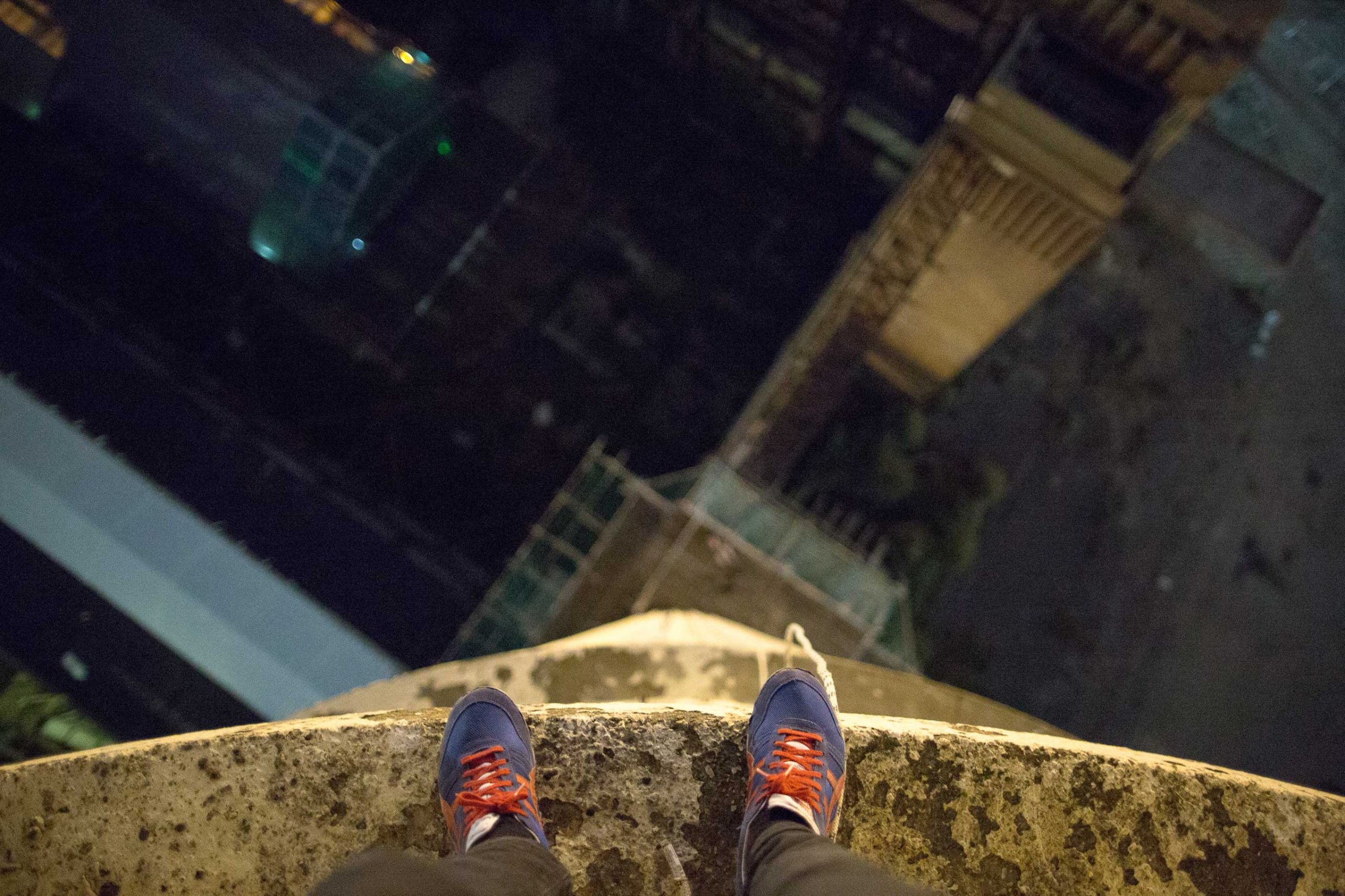
To the undiscerning eye, social geographer Bradley Garrett is your quintessential armchair Oxford scholar. He picked up a string of bachelor degrees from the University of California in 2003, followed by a PhD at the University of London and is currently a postdoctoral research fellow at Oxford University. His 10-page resume holds a laundry list of lofty accreditations—from research in capital striation to bunkerology, extrastatescraft to illicit encounter. But despite his highbrow front on paper, Garrett is a renegade.
He gained fame four years ago for a photograph of him clinging a crane nearly 1,000 feet in the air on The Shard in London. In the eight years following, Garrett has broken into nearly 1,000 locations across the world. Whether he’s scaling a building 20 stories up, flash-lighting through abandoned asylums, scouring stately homes or infiltrating the deep wells of Joseph Bazalgette’s Victorian sewer systems, no No Trespass sign thwarts him. He calls himself a “place hacker”.
“Everyday life has been stripped of most adventure to create a pre-packaged commodity of anything,” he says. “Even something like scuba diving or skydiving has become so sanitized by rules and regulations that it is difficult to be scared of those activities if you think about it rationally. The beauty of urban exploration is that it is completely chaotic—anything could happen.”
Garrett admits he loves the jolting gut punch of stomach-flopping heights. But he is not breaking rules for rule-breaking sake. Urban exploration, he says, is a way to reclaim cities that have become enclaves for the rich. “Spaces are built to circumscribe discovery, creating limitations about what can be experienced and, even more nefarious, what can be imagined.”
In his upcoming book, Prestel Publishing’s London Rising, which Mckenzie Wark describes in the foreword as a “great poem of our time”—a nod to the ‘Pylon Poets’ who in the 1930s wrote of a British landscape as an imposition of steel and concrete and electricity. From gritty, aging gasholders to lavish corporate developments, the book re-imagines the city both as it now stands and as it could one day become.
In his teens, Garrett recalls driving into the Mojave Desert in California on the lookout for Native American ruins and old mines, camping in them for days. After embarking on a worldwide archeological study through Oxford, he returned to London and began this more unorthodox side project. He joined the London Consolidation Crew—a group of part-time photographers part of a new global movement of urban explorers accessing off-limits architecture.
Garrett’s images, taken at dizzying heights, are cold and sharp with clean lines and bodies that appear small in frame for scale. Others are blurred and sometimes grainy, capturing what he calls “bookmarks” to experiences intended to capture the feeling of the moment. “You might expect me to say having a good camera is really important–it’s not,” he says. “Urban exploration is about unique experiences to be had when you step over the line. What we are trying to relay with the photos is a feeling of freedom and that, I’ve learned, is not something that can be offered, it must be found.”
As the global movement gains sway, Garrett is keen to remind young people to be aware of the risks.
Without smart security measures—finding maps, learning particular skills, scoping locations and hiring specialists who are good with ropes—the outcome can be deadly. “In the metro, you could be electrocuted or hit by a train; in abandoned buildings, you could fall through a floor or be crushed by a collapsed roof. When climbing masts, a slight misstep could be detrimental. In drains and sewers, unexpected rain could lead to drowning. And not just drowning, but drowning in sewage, which has to be on the list of most horrific deaths possible.”
Garrett has spoken out against a rising number of young kids who are taking dicey risks to gain credibility on social media platforms. The breaking point was a 2014 video—which garnered 52 million views on YouTube—shows two Russian explorers high-fiving one another while balancing on a crane arm 2,073-feet above ground. For Garrett, the video is a testament to how urban exploration has largely turned into an exercise in bravado to garner attention.
“I am increasingly unhappy with what urban exploration is becoming and do feel a need to distance myself from the community,” he says. “The video is, by all accounts, affecting. But it required no technical skill or photographic expertise to produce. It is simply a roughly edited video from GoPro cameras that highlights particularly acute brazenness and a willingness on the part of the explorers to put themselves at incredible risk to receive kudos online.”
Bradley Garrett is a social geographer and a Visiting Research Associate at the University of Oxford. On his days off, he is a self-described “place hacker” who photographs forbidden places.
Rachel Lowry is a writer and contributor for TIME LightBox. Follow her on Twitter and Instagram.


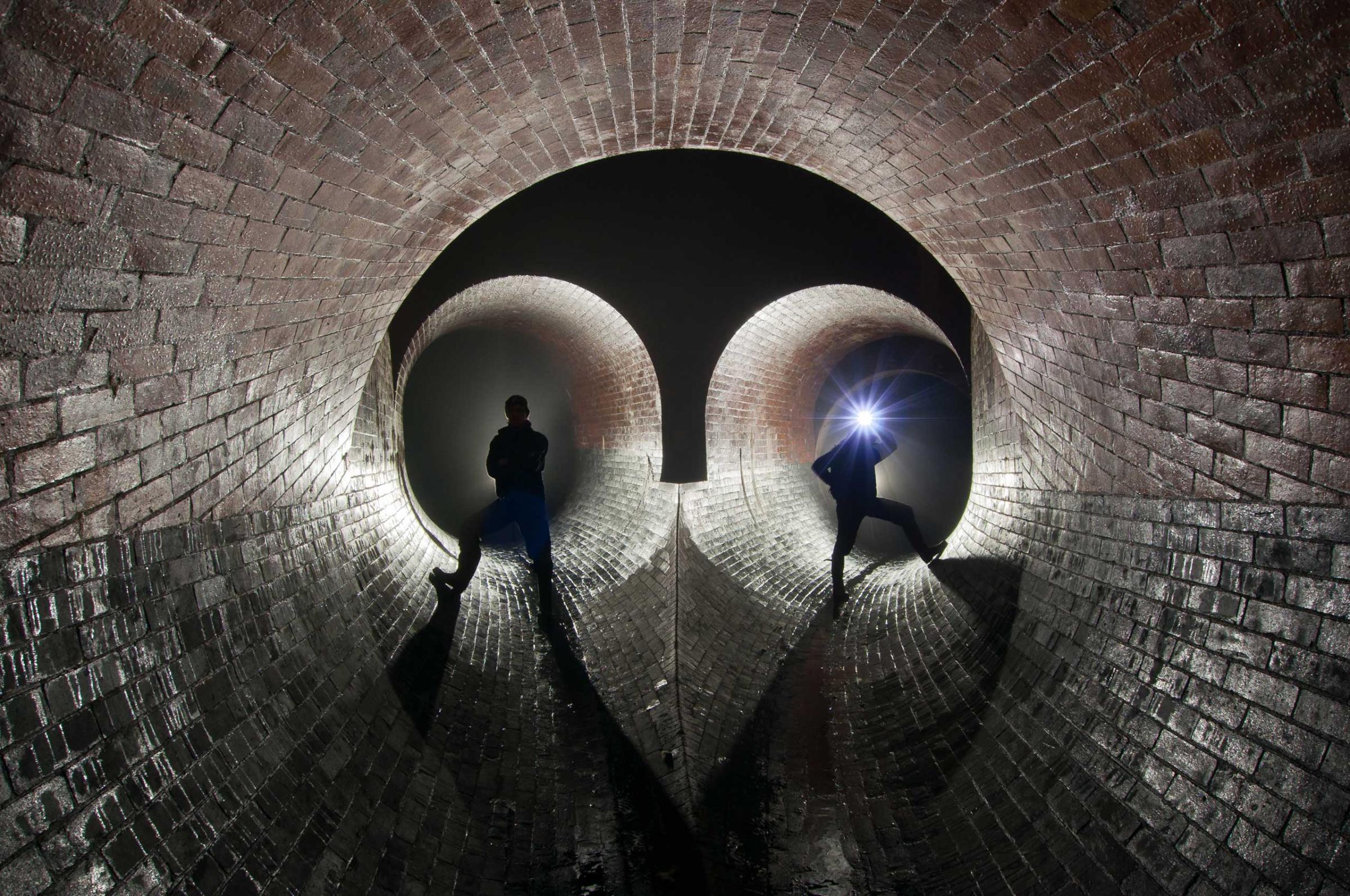
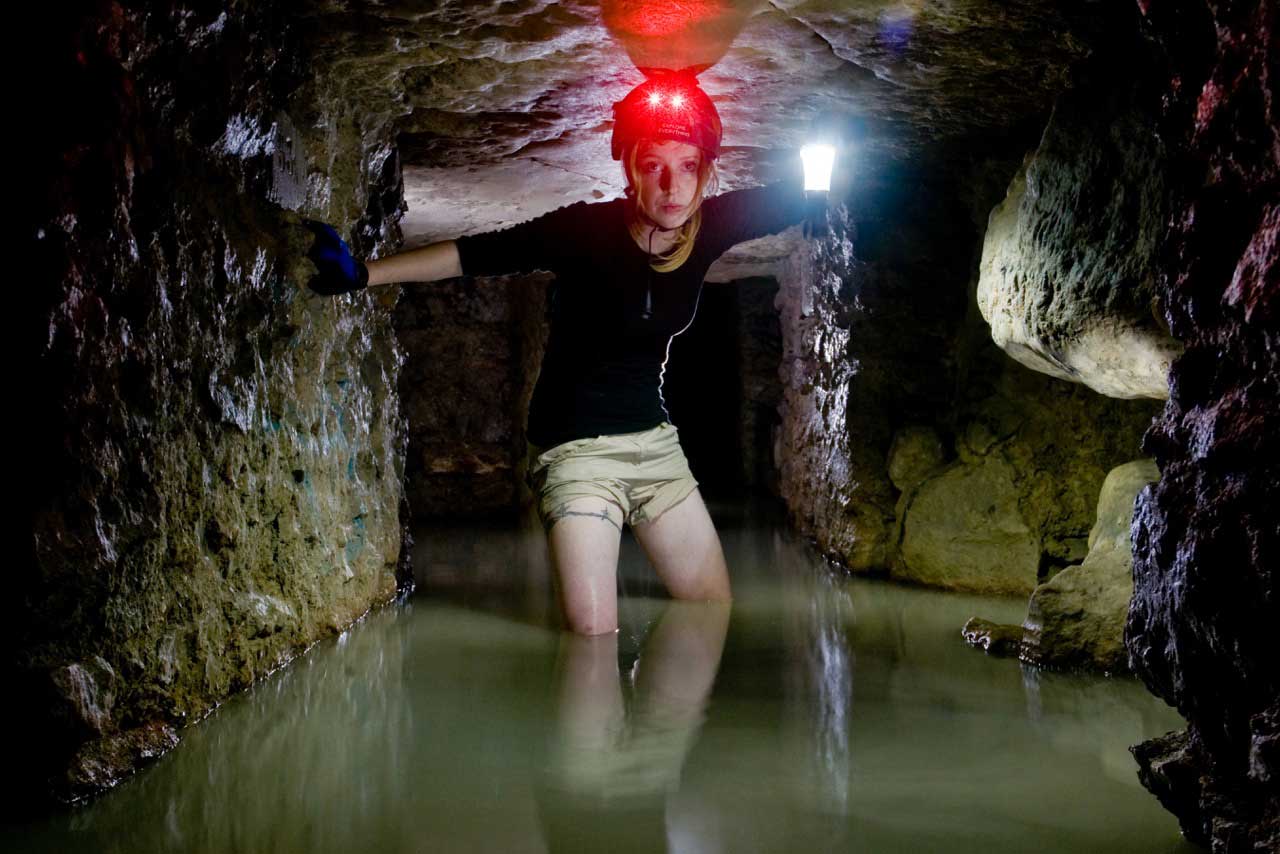


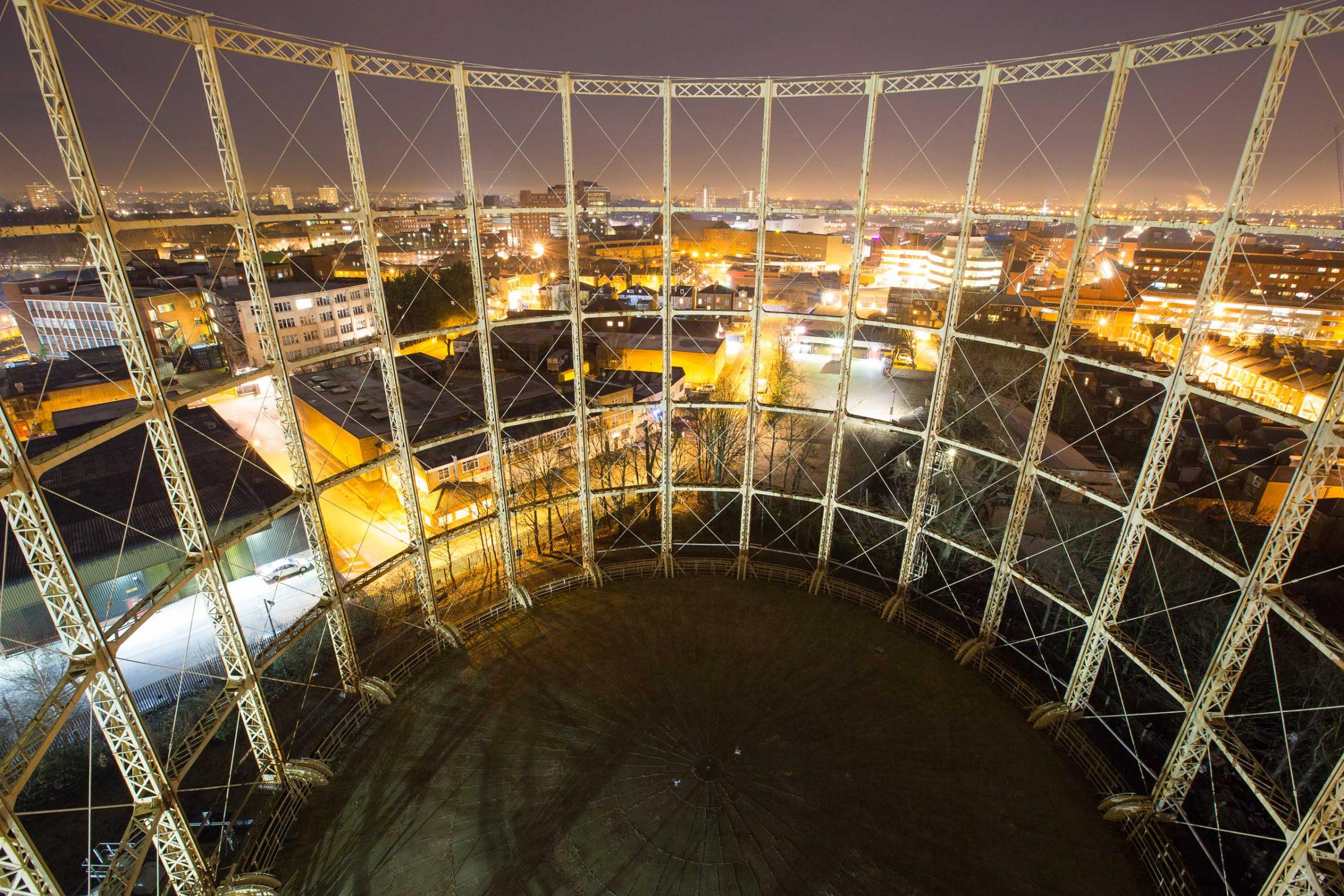
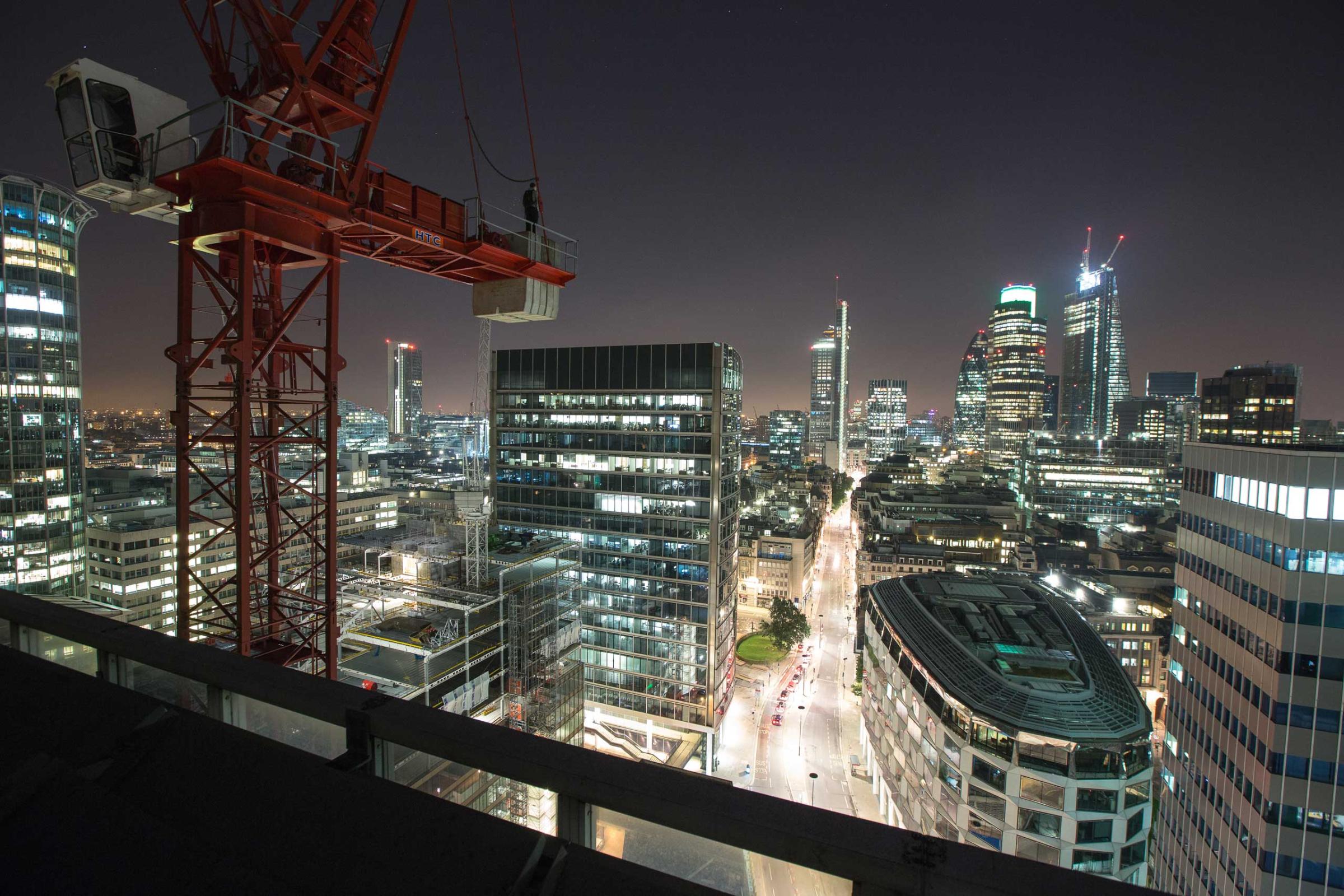
More Must-Reads from TIME
- Donald Trump Is TIME's 2024 Person of the Year
- Why We Chose Trump as Person of the Year
- Is Intermittent Fasting Good or Bad for You?
- The 100 Must-Read Books of 2024
- The 20 Best Christmas TV Episodes
- Column: If Optimism Feels Ridiculous Now, Try Hope
- The Future of Climate Action Is Trade Policy
- Merle Bombardieri Is Helping People Make the Baby Decision
Contact us at letters@time.com